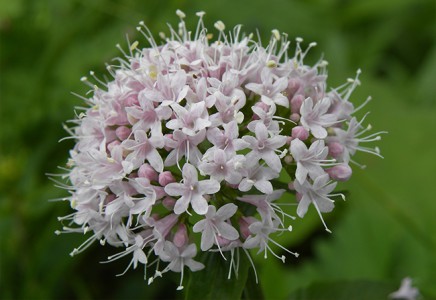
Valerian Ancient Greece doctors considered valerian to have properties of thoughts controller, sedative and brain strengthen agent.
Valerian belongs to Valerianaceae family, Valeriana Ideae subfamily. This is herbaceous perennial rhizome plant with fibrous roots and upright cylindrical stem. The leaves are opposite, imparipinnately, with ovate-lanceolate leaves, the lower are petiolate, the upper – sessile; sometimes bottom sand, and lower leaves are whole. The flowers are small, irregular, pinkish-white, fragrant, are collected in a large corymbose inflorescence. The berries are achene with plume, pubescent or completely naked. The rhizomes and roots have characteristic smell and taste. The height is 60-150 cm.
The rhizomes and roots of valerian contain essential oil, alkaloids, saponins, sugars, tannins, malic, formic, valerianic, acetic, stearic, palmitic, and other organic acids, glycosides (valerid, A, B, C valerozids) and the volatile substance.Valerian root have anticonvulsant and antispasmodic effects. It reduces reflex excitability and relaxes smooth muscle spasms. Valerian root is used as a sedative in nervous excitement, nervousness, cardiovascular system diseases, leading to heart, stomach and intestines spasms, insomnia, migraine.


